I likely last saw this footage when it was new — live, in fact — on Valentine’s Day, 1977.
In it, 40-year-old Peter Boyle and 27-year-old John Belushi….well: Watch.
I likely last saw this footage when it was new — live, in fact — on Valentine’s Day, 1977.
In it, 40-year-old Peter Boyle and 27-year-old John Belushi….well: Watch.
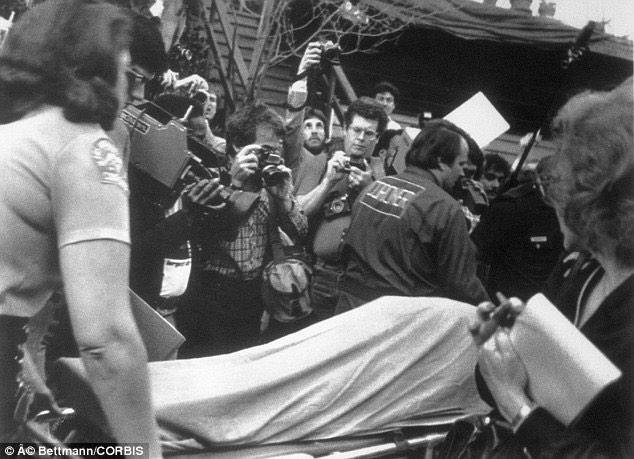
Today The Hollywood Reporter published a big chunk of The Castle on Sunset, focusing on the final days of John Belushi, who died at Chateau Marmont in March, 1982. Here’s a link to their piece (and, for the record, yes, John Krasinski owns the TV rights to the book, but no, we’re not in business with Aaron Sorkin and/or HBO).
As ever, you can read all this and more in my new book, The Castle on Sunset, to be published on May 7 by Doubleday and June 13 by Orion.
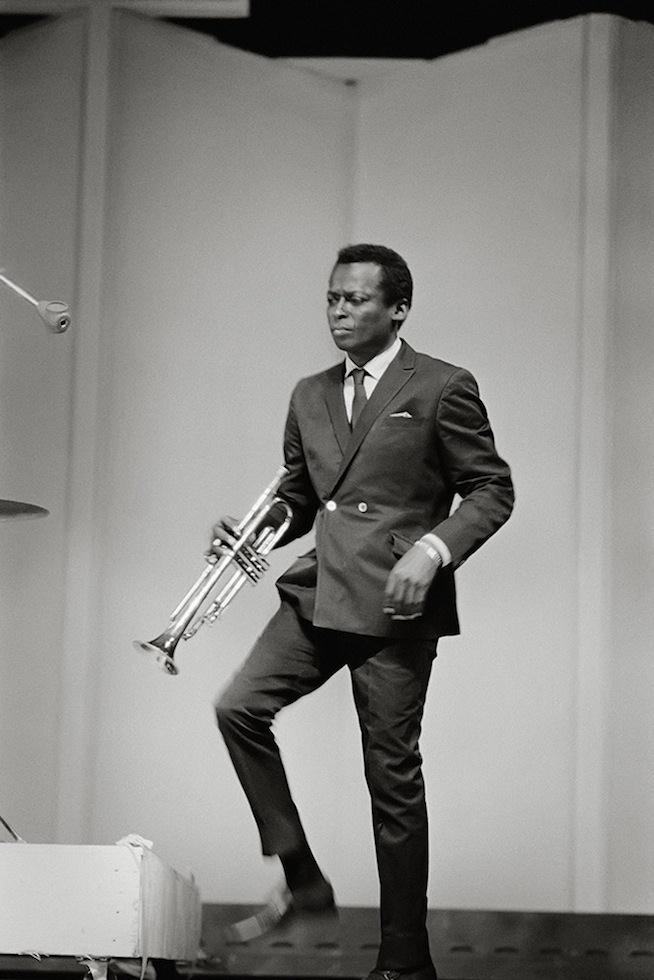
After Duke Ellington integrated Chateau Marmont in the late 1950s, the hotel became a regular destination for the other black jazz musicians, including Dizzy Gillespie, Erroll Garner, Quincy Jones, Sarah Vaughan, and Nina Simone.
But none made an impression to compare with Miles Davis, who stayed at the hotel several times, including the spring of 1963, when he was recording the album Seven Steps to Heaven at Columbia studios in Los Angeles.
Miles was accompanied by his wife, the dancer Frances Taylor, who was depicted on the cover of his 1961 LP Someday My Prince Will Come . Frances was interested in starting a film career, and an extended stay in Hollywood was a big opportunity.
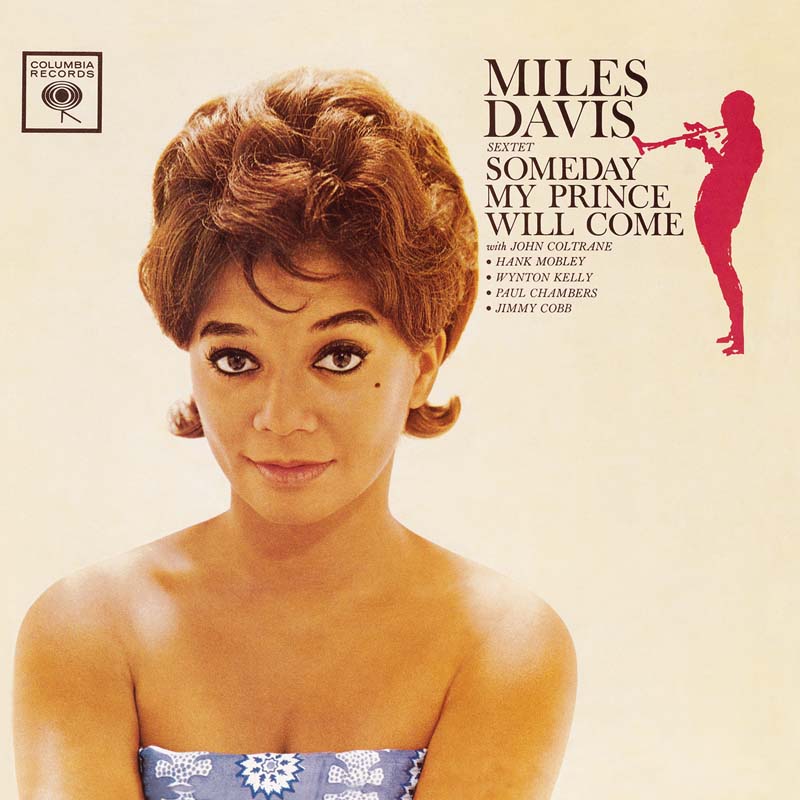
The couple socialized in the hotel — Miles went pheasant hunting in nearby canyons with actor Rip Torn, and Frances met a casting director named Michael Macdonald who was encouraging to her.
One evening, Macdonald phoned the Davises’ suite to invite Frances to a film screening. Miles answered in typical Miles fashion: “She’s not here, motherfucker.”
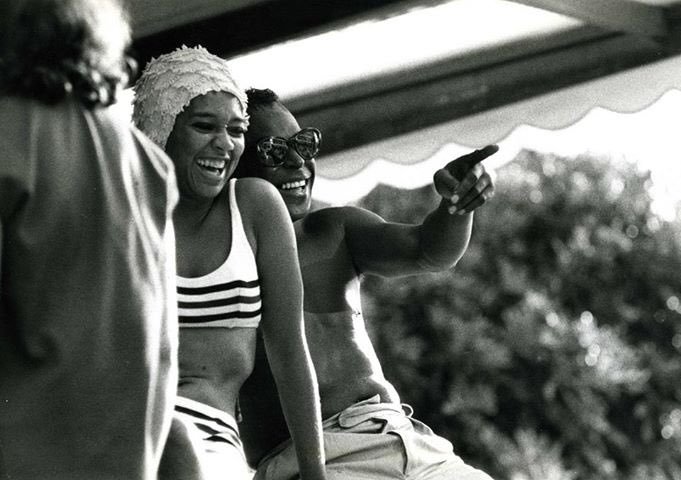
Macdonald wasn’t used to such language. He said goodbye, hung up the phone with a finger, turned to a companion to say, “Miles just called me ‘motherfucker,'” and started to make another call. He didn’t realize, though, that Miles was still on the line.
“No, I called you a cocksucker,” Miles told him.
Oh.
(This post is based on portions of my upcoming book — The Castle on Sunset: Life, Death, Love, Art, and Scandal at Hollywood’s Chateau Marmont — which will be published on May 7 by Doubleday and Orion.)
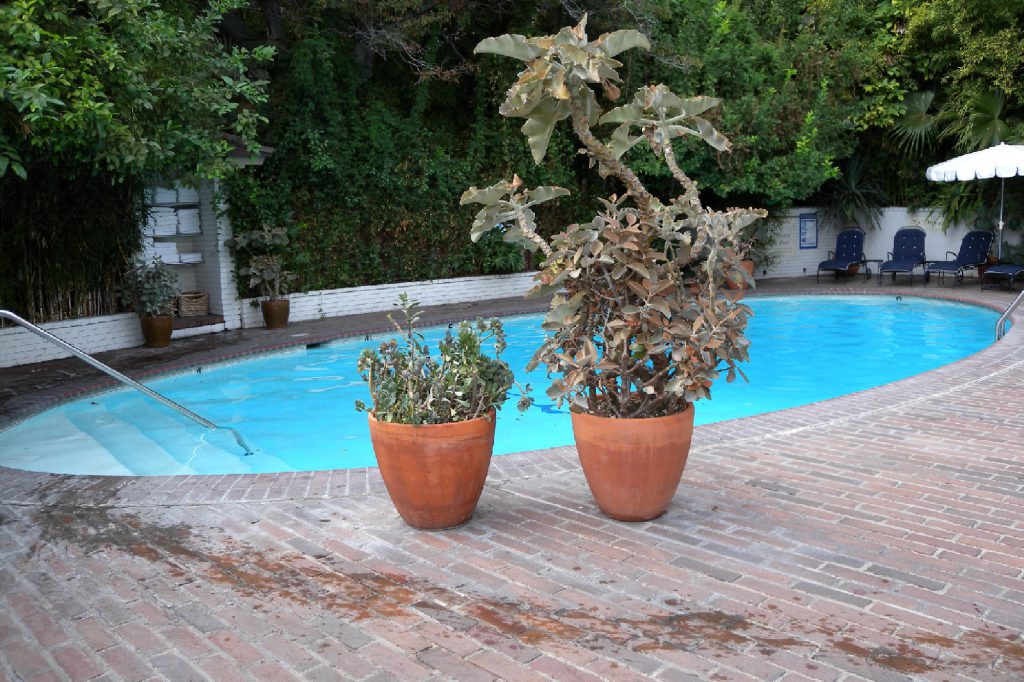
It was tiny — “a navel filled with sweat,” Gore Vidal once called it — and it didn’t offer high-end amenities such as cabanas. But for decades the pool at Chateau Marmont was the only public meeting area in a hotel that had no bar or restaurant or even much of a lobby. So it was a truly hot spot.
Indeed, it was even more than that. Per the dictates of Erwin Brettauer, the anti-Fascist German banker and film financier who bought the hotel in the 1940s and built the pool soon after, the Chateau was a place of tolerance and welcome for all. It would become Hollywood’s first racially-integrated hotel. And it was always welcoming to queer men and women. Meaning that, intentionally or not, the hotel’s tiny pool became a popular gathering place for Hollywood’s (largely closeted) gay community.
Among those gatherers was Anthony Perkins, born 87 years ago today, a New York prep school kid turned stage actor in the footsteps of his father, actor Osgood Perkins. Tony came to Hollywood in 1955 to star in the Civil War drama Friendly Persuasion. He took a small room at the Chateau and developed a reputation as a kook: hitchhiking to the studio, keeping a pet bird which he sported on a shoulder, walking Sunset Blvd. barefoot — harmeless, semi-bohemian stuff.
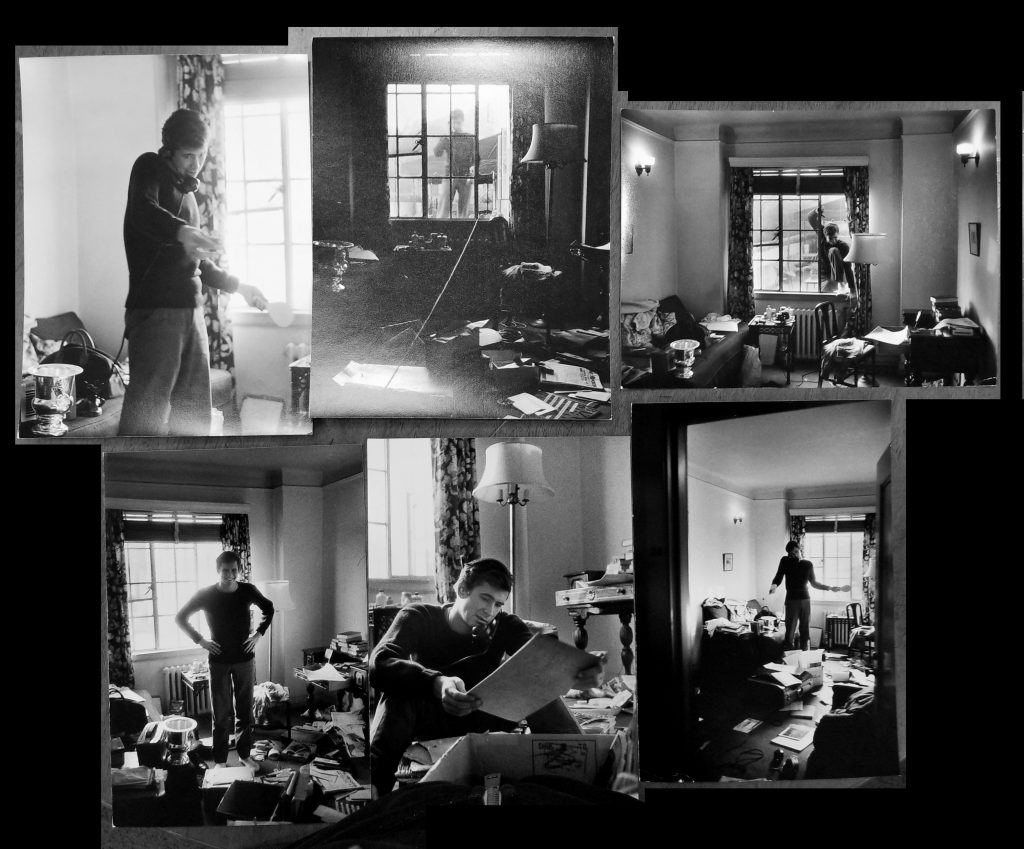
He dated starlets — it was practically a condition of a movie contract — and he also dated men. Perkins was bisexual his whole life, and he kept the part of himself that was attracted to men hidden from the press, his movie studio bosses, and anyone else who might use it to derail his career. He attended all-male social events at the Chateau, for instance, and, according to others, behaved in an aloof, faux-naive manner, as if pretending he didn’t know that everyone around him was gay.
So when Perkins met another young gay actor at the Chateau pool that summer, and they began an affair, he did everything he could to keep it secret.
His new lover was Tab Hunter, an even more popular young star, a heartthrob with a thriving big-screen career, a perennial spot on the covers of movie magazines, even a string of hit pop records. Hunter, like Perkins, dated women — for publicity purposes. In heart and practice, though, he was gay.
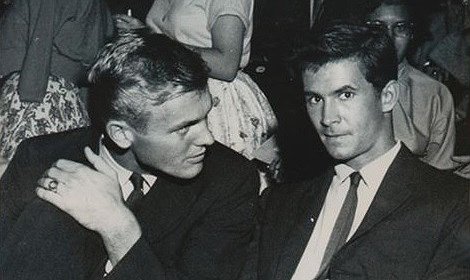
The two were introduced poolside and quickly began an intense affair — always keeping an eye peeled to ensure that the press didn’t learn of, or share, the true nature of their connection. They often double-dated, each with a starlet on his arm, per studio publicity dictates, but really out on the town together. Perkins was the more chary of the two — a real careerist, as Hunter later recalled. And you can see it in a number of photos of the two: Hunter is often captured staring at his beau; Perkins is looking around as if to see who’s watching them.
The relationship fizzled after a couple of years through unfortunately predictable circumstances: Perkins grabbed up the lead role in Fear Strikes Out — a baseball movie for which Hunter, who had become famous in Damn Yankees — was also being considered. When Hunter confronted his lover about it, Perkins shrugged it off. His career was his greatest love. The affair was over.
You can read more about Tab, Tony, the “navel filled with sweat,” and other tales of the Chateau in my book The Castle on Sunset: Life, Death, Love, Art and Scandal at Hollywood’s Chateau Marmont, which will be published on May 7 by Doubleday and June 13 by Orion.
For decades, Chateau Marmont was known to those who knew it…and relatively anonymous to the rest of the world, even lifelong Angelinos who drove past it every day. The Chateau barely advertised, it was tiny enough to subsist on a show biz clientele, and its reputation for discretion was actually enhanced by its being more obscure than other celebrity haunts.
All that changed on the morning of March 5, 1982.
It began with a few people walking hurriedly from the main building to one of the bungalows in the back of the property. It reached a crescendo with the hotel surrounded by paparazzi, news vans, and helicopters. And it ended with a body on a gurney being loaded into an ambulance.
The body was that of comedian John Belushi, who’d been renting that bungalow, dead of a drug overdose at age 33.
There is much to be said about Belushi’s untimely and unseemly demise, his alcohol and drug consumption, his career difficulties, his gradual and, ultimately, fatal loss of control, and the willing blindness of some of his friends — including Robert De Niro and Robin Williams, who were with him hours before he died.
But for today, the focus is on the hotel.
Prior to Belushi’s death, Chateau Marmont was almost like a speakeasy: known by those to whom it should have been known, an open mystery to those who didn’t necessarily need to be familiar with it.
In the days following the comedian’s overdose– and, really, forever after — that changed. The press and lookey-loos of March 5 were replaced by daily drive-bys of tourist busses: ghoul tours of celebrity death sites. The hotel featured prominently in Bob Woodward’s Belushi bio Wired (and the film made from it), and for decades Belushi’s death was mentioned in every newspaper and magazine travel story about LA hotels or article based on an interview conducted on the hotel’s grounds.
Management completely renovated the bungalow after that awful day, but some guests actually requested the “Belushi bungalow” when making reservations, including Jean-Michel Basquiat and Rick James, to name two pointed examples.
Indeed, as dark as the association was, the hotel had to accept and even find nourishment in it.
As novelist Jay McInerney told it, on his first movie-related trip to Hollywood, the production company that paid for his visit mentioned that they were putting him up at Chateau Marmont.
McInerney had never heard the name.
“Is that good?” he asked.
“Good?!” came the startled reply, “John Belushi died there!“
(A fuller version of this story, and many like it, is to be found in the pages of my new book, The Castle on Sunset: Life, Death, Love, Art, and Scandal at Hollywood’s Chateau Marmont, coming on May 7 from Doubleday and Orion.
In April, I’m doing a series of nights of one of my absolute favorite things: Introducing films, watching them, and talking about them. It’s all based on my book “Ready, Steady, Go!” and it should be a blast. If you’re in town, hit ’em up. If not, you can watch along and read the book!
SWINGING LONDON CINEMA
We remember the rock and roll, the fashion, and the whole kids-taking-over-the-world thing. But the Swinging London of the ’60s was a font of great cinema, too. In these entertaining and revealing films, the heart of the era is captured, defined, and dissected. Shawn Levy, author of Ready, Steady, Go! The Smashing Rise and Giddy Fall of Swinging London, will present each film and moderate a post-screening chat.
A HARD DAY’S NIGHT (1964) – April 8
Maybe a perfect movie. Richard Lester’s make-believe vision of a couple of days in the life of The Beatles presents the rise of the youthquake in a cross of documentary, music video, and fever dream. Joyous, playful, inventive, brimming with infectious tunes, shot in gorgeous black-and-white, full of tender moments of lost time, and utterly, utterly charming.
DARLING (1965) – April 15
Sexy and cynical, John Schlesinger’s tale of a young woman surfing the cultural and economic opportunities of the times is both a snapshot of the day and a critique of it. Sparkling, beguiling Julie Christie won an Oscar as a dolly bird claiming the prizes that life offers up to a beauty with ambition; Dirk Bogarde and Lawrence Harvey are among her sharp and swanky men.
BLOW-UP (1966) – April 22
In a bona fide pop masterpiece, Michelangelo Antonioni aims his gaze at a photographer who thinks he has captured evidence of a crime. A cerebral vision of a hedonistic world, posing a haunting puzzle, preserving some real-life moments of the day, and coolly pointing a crooked finger at human vanity and pretense. A Rorschach test of a movie that looks different every time you see it.
PERFORMANCE (1970) – April 29
When a reclusive rock star and a sadistic gangster become allies, co-directors Donald Cammell and Nicholas Roeg find rancid corruption at the bottom (the heart?) of the swinging scene. Mick Jagger wrapped in smoke and sex; James Fox flexing an animal cunning; and a thick air of raunch, decay, and menace: a death knell that’s as much Edgar Allen Poe as it is The Rolling Stones.
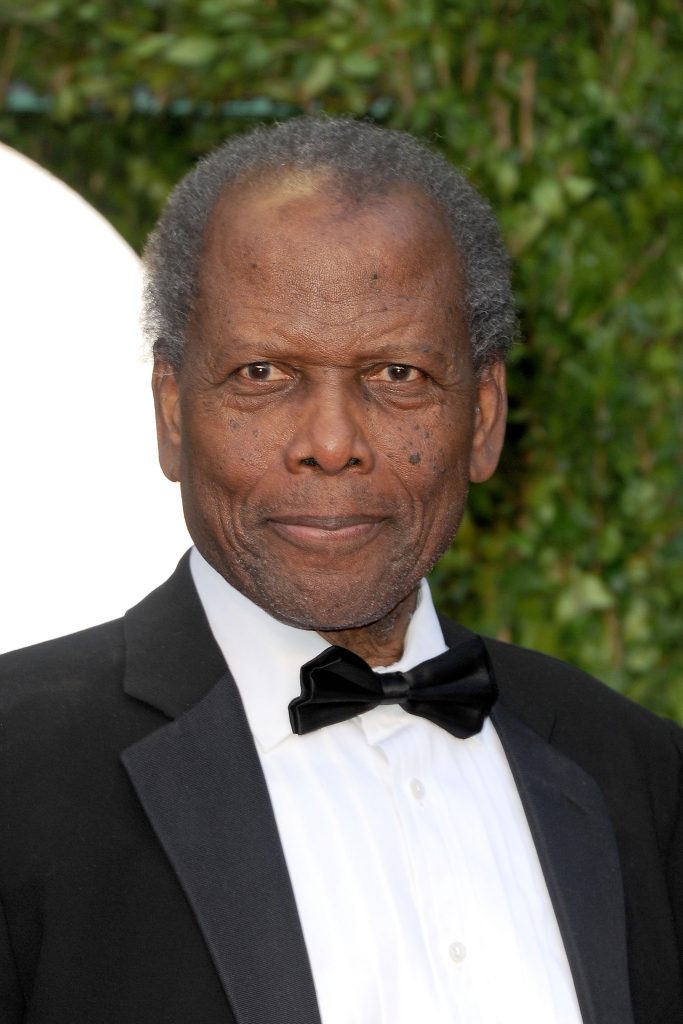
Sidney Poitier — SIR Sidney Poitier, KBE, that is — turns 92 today, and if you think you can name another living actor of such talent, accomplishment, impact, dignity, and cultural significance, I’ll wait….
Anyhow: In 1960, when he came to Hollywood to film A Raisin in the Sun, Poitier wanted to rent a house in Beverly Hills or environs where his family, who were based in New York, could live for the duration of the shoot. He found, however, that nobody was willing to give a lease to a black family. Poitier, his wife, their three kids, and their household staff wound up instead living in three adjacent units at Chateau Marmont. He spoke of his experience and his frustrations with The New York Times — the first time, by the way, that that newspaper ever mentioned the hotel by name.
As it happened, Poitier had stayed at the Chateau previously — in 1958, when he was filming Porgy and Bess. At that time, he chose it because it was the first quality hotel in Hollywood or Beverly Hills to open its doors fully to black guests. Under the ownership of Erwin Brettauer, nobody was denied access to the Marmont on the basis of race, religion, sexual orientation, or even lifestyle (provided said lifestyle wasn’t too destructive of the property….).
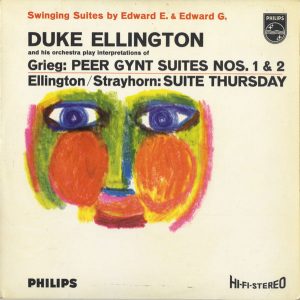
The color line at the Chateau had first been broken by Duke Ellington — he composed an album of jazz variations on Edvard Grieg’s Peer Gynt Suites while walking through the hotel’s corridors at night — and after that the Marmont quickly became the favored hostelry for black musicians, actors, artists, and celebrities.
During Poitier’s first stay, he began a romance with his Porgy co-star Diahann Carroll who, like him, was married to a spouse who’d stayed back in New York. Their affair began quietly, with candlelit dinners in Poitier’s suite. But it eventually proved to be more than just a fling: It cost them both their marriages, and it ended nearly a decade later…without the fairy tale wedding that everyone supposed would occur.
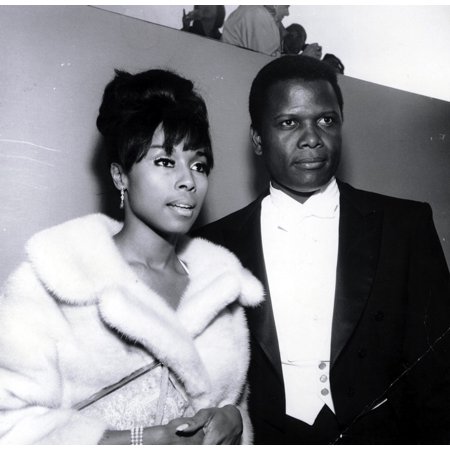
It was, in the end, a fabulous liaison — one of an infinity of such couplings that the Chateau was famous for — and one made possible by the Chateau’s well-earned reputation as a safe and welcoming harbor for all.
(This post is based on portions of my upcoming book — The Castle on Sunset: Life, Death, Love, Art, and Scandal at Hollywood’s Chateau Marmont — which will be published on May 7 by Doubleday and Orion.)
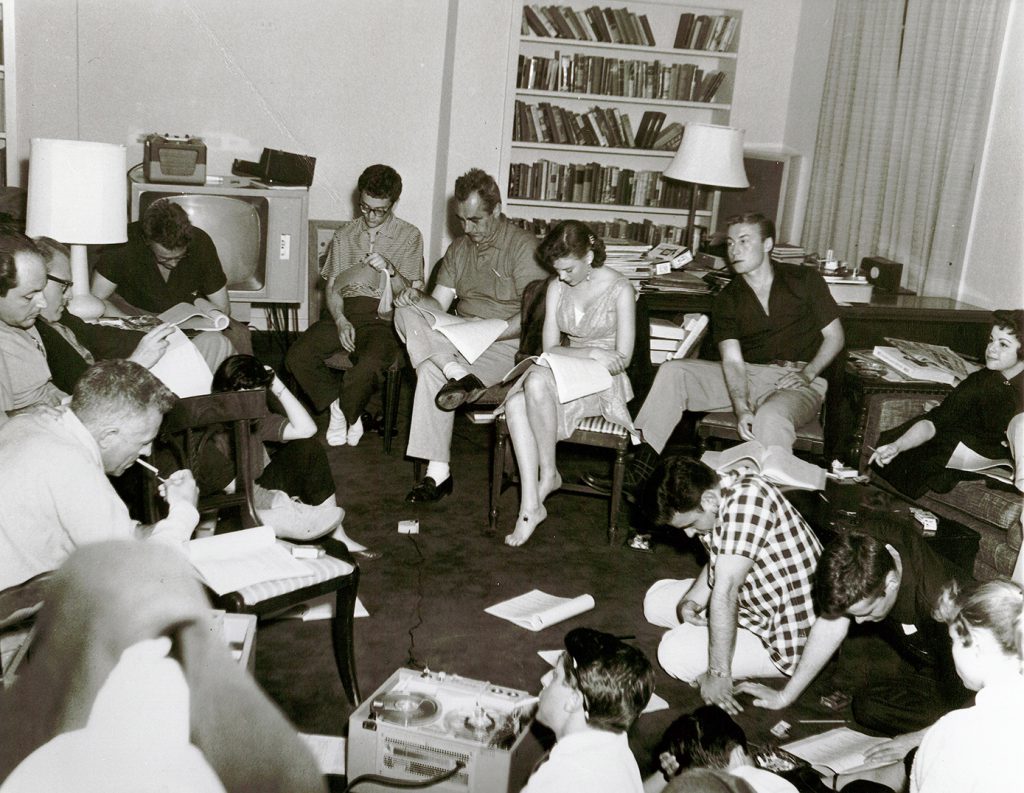
Among the myriad celebrities who called Chateau Marmont home over the years, the great actor James Dean, born on this day in 1931…wasn’t one of them.
But Dean’s connection to the hotel is deep and important.
One night in 1954, Dean showed up at a bungalow in the back of the hotel where director Nicholas Ray was living. Ray was working on a new movie about the traumas of modern youth that was to be called Rebel Without a Cause. It needed a star. And in Dean, who was just about to debut in East of Eden, Ray thought he found one.
Dean got the part, and he began to visit Chateau Marmont regularly for Ray’s famous Sunday salons, full days of swimming, bongo playing, boozing, chatting, a little sex, a little reefer — whatever the mood suggested.
Other of Ray’s Rebel stars began to frequent the Chateau, most notably Natalie Wood and Sal Mineo, both of whom were underage and both of whom were bedded by their director. Less sensationally, Ray often invited the whole cast to his bungalow for read-throughs of the script, one of which is pictured above.
The last time Ray saw Dean was at the Chateau, when Dean came by to borrow a book about how to take care of a cat. (His Giant co-star Elizabeth Taylor had given him a kitten as a gift when that film wrapped.) Ray and Dean were planning to travel to Nicaragua to research a new movie idea. Dean was killed in a car wreck mere weeks later, and the prospective film was forgotten.
But the movie that resulted from their very first encounters at Chateau Marmont, Rebel Without a Cause, remains one of Hollywood’s classic melodramas, and much of the story of its making is indelibly connected to the grand old hotel.
Read the whole story and more in my upcoming The Castle on Sunset: Life, Death, Love, Art, and Scandal at Hollywood’s Chateau Marmont, coming May 7 from Doubleday and Orion.
In this great story about Chateau Marmont at 90, “Vanity Fair”‘s Mark Rozzo calls my upcoming book “fantastically fizzy” and quotes me several times on the hotel’s history and place in Hollywood lore. My book’s due May 7, but this’ll hold you till then.
https://www.vanityfair.com/style/2019/02/secrets-of-the-chateau-marmont
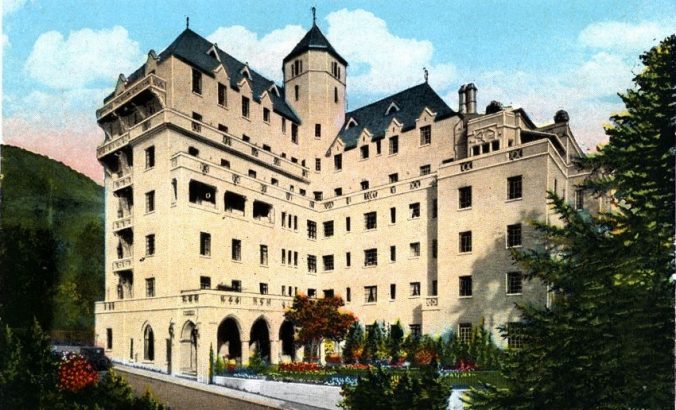
On February 2, 1929, Fred Horowitz, a downtown Los Angeles attorney, officially cut the ribbon on a luxury apartment house alongside an unpaved stretch of Sunset Blvd.
Horowitz had the nutty idea that the area, a bridle path lined with onion and poinsettia fields that connected Beverly Hills and Los Angeles, would soon blossom. As he liked to point out, it sat 20 minutes from anywhere you’d want to be, it was convenient to movie studios in Hollywood and Burbank, and it was both governed not by the city but by the county, which meant taxes, licenses and building fees were relatively cheap.
The building, which Horowitz modeled on a chateau he’d admired in the Loire Valley of France, was anything but cheap. Horowitz insisted on steel reinforcement to make the building earthquake-resistant, on double-thick walls to keep noise down, and on maximizing the number of penthouses — large apartments with terraces that commanded stunning views from the mountains to the ocean to downtown. As a result, although it may have been situated in the middle of not much, it was durable, it was quiet, and it was, most of all, private.
He called the place Chateau Marmont.
And over the next nine decades, everyone would stay there, and everything would happen there.
You can read all about it in my new book The Castle on Sunset: Life, Death, Love, Art, and Scandal at Hollywood’s Chateau Marmont, coming May 7 from Doubleday and Orion.
Till then, raise a glass to the Grande Dame of the Sunset Strip!
COMING MAY 7, 2019 FROM DOUBLEDAY AND ORION
“Fantastically fizzy” — Vanity Fair
“Fascinating, dishy, and glimmering with insight…a must-read for anyone interested in the rich and racy history of Tinseltown….This is the definitive book about Hollywood’s most storied hotel.”
—Cheryl Strayed, #1 New York Times bestselling author of Wild
“I felt like I was sneaking around the hallways of the Chateau after midnight and peering through keyholes in history….Lovingly researched and wonderfully dishy.” —Joe Hagan, author of the national bestseller Sticky Fingers: The Life and Times of Jann Wenner and Rolling Stone Magazine
“Levy has managed to make the hotel itself a living, breathing, and wonderfully endearing character. The Castle on Sunset is thoughtfully researched and gorgeously executed.” —Jacob Tomsky, New York Times bestselling author of Heads in Beds: A Reckless Memoir of Hotels, Hustles, and So-Called Hospitality
“As elegant and naughty as the hotel’s guests, The Castle on Sunset tells a secret history of American film, fame, and decadence. It’s a spellbinding read.” —Peter Ames Carlin, New York Times bestselling author of Bruce and Homeward Bound
“An irresistible, deliciously dishy deep-dive…told in prose so witty and alive, you feel you’re sitting at the bar with Dominick Dunne. This is a book worthy of its glamorous, alluring subject.” —Wednesday Martin, #1 New York Times bestselling author of Primates of Park Avenue and Untrue
“Filled with show business stories and lore, etched against the backdrop of an ever-changing L.A., The Castle on Sunset gives the Marmont the splendid biography it deserves.” —Steven Gaines, New York Times bestselling author of Philistines at the Hedgerow: Passion and Property in the Hamptons and The Sky’s the Limit: Passion and Property in Manhattan
“For years, Shawn Levy has been shaming the rest of us who write about movies with his contagious high spirits, elegant phrasemaking, Stakhanovite appetite for research, and maddeningly natural reader rapport….Check in, call room service, draw yourself a hot bath and luxuriate!” —David Kipen, author of Dear Los Angeles: The City in Diaries and Letters
“[An] engrossing account of the L.A. hotel’s 90-year history of decadence.…This eye-popping and entertainingly lurid tale of Hollywood scandal and intrigue will delight readers.” —Publishers Weekly
“Levy delivers all the goods on Hollywood’s iconic, storied, and scandalous hotel.” —The Portland Tribune
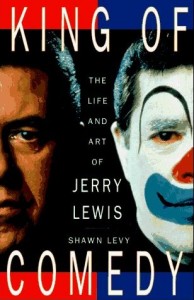 Pardon the self-promotion, but, really, who else would do it? 😉
Pardon the self-promotion, but, really, who else would do it? 😉
Twenty years ago last month I published my first book, “King of Comedy: The Life and Art of Jerry Lewis.” It appeared in a single hardback edition and, the following year, a single paperback edition. There were no ebooks at the time (my second book, published in 1998, was the first of my work to be published digitally, and that was after an amendment to the contract). The book has had a pretty good reputation over the years, but it’s been unavailable outside of the resale market for two decades, more or less.
TODAY, for the first time ever, “King of Comedy” will be available as an ebook for your digital reader, tablet, phone, what have you. You can buy it here.
For some reason, I am more than a little tickled by this.
And, again, thanks for your indulgence. This writing thing can get kind of lonely. Grateful to have a place to crow a little and a murder of fellow crows around who won’t…murder me for it.
It’s been a remarkably busy few weeks for “De Niro: A Life,” and I’ve been negligent in sharing the results of the activity. That ends now.
REVIEWS
— Lisa Schwarzbaum weighed in for the New York Times Book Review
— Peter Tonguette did the same for the Christian Science Monitor
— In the Washington Post, Sibbie O’Sullivan had a go
— At Flavorwire, Jason Bailey compared my De Niro book with my chum Glenn Kenny’s
— Maybe your Portuguese trumps mine; if so, check out this nice notice from Cassio Starling Carlos in O Vale
— Finally, Michael Chasin took a turn at IAFT.net
MENTIONS
A few news outlets included the book in their holiday book roundups:
INTERVIEWS
— I spoke with April Baer on Oregon Public Broadcasting’s “State of Wonder”
— And I chatted with Dr. Alvin Jones on his Dr. Alvin radio show and web site.
As before, the book is available in print and/or in digital formats at Amazon, Barnes & Noble, Powell’s, and other purveyors of words-on-paper and/or -screens.
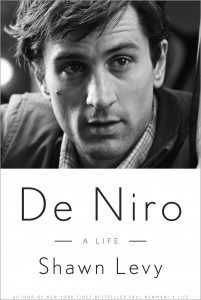 Another Q-&-A hit the web this week, this one with the Portland Tribune.
Another Q-&-A hit the web this week, this one with the Portland Tribune.
And then there’s this humblingly positive review from Peter Martin at Twitch.
Publishers Weekly chimed in as well, somewhat neutrally.
There was a nice note about this week’s Powell’s event in the Portland Mercury.
I was on the radio in Ireland on the Moncrieff show, which went something like this (starts at the 7:00 mark).
Finally, my visit to KATU-TV’s “AM Northwest” resulted in this segment (Note to self: stripey shirt = not so much):
 It is, apparently, an era of Q-&-A interviews — which, as a journalist I understand (it’s quicker) but as an author I rather bridle against (it’s more work to write my answers out than simply to say ’em).
It is, apparently, an era of Q-&-A interviews — which, as a journalist I understand (it’s quicker) but as an author I rather bridle against (it’s more work to write my answers out than simply to say ’em).
Anyhow, “De Niro: A Life” has occasioned two such interviews in recent days:
— One from Reuters which has been translated and published (often in print) all around the world.
— One with my old friend Byron Beck, who currently writers for GoLocalPDX.
And, what the heck, one non-Q-&-A, a brief but enthusiastic item in Portland Monthly.
And if you’re weary of reading my words in Q-&A format, how about watching it?
Here’s my visit to KGW-TV’s “Live at 7”:
 Week two of the release of “De Niro: A Life,” and I’ve got some nuggets to share.
Week two of the release of “De Niro: A Life,” and I’ve got some nuggets to share.
Firstly: My appearance on Weds morning (Sydney time; Tuesday afternoon here) on Australia’s “Mornings” talk show.
Then a couple of print Q-and-A interviews: one in Word and Film, one in Biographile.
There was also a brief chat about the book — and about my pal Glenn Kenny’s “Robert De Niro: Anatomy of an Actor” — on Hollywood Elsewhere (check the comments where Glenn and I muse on the strange coincidence of two De Niro books in one year).
EVENTS
If you’re in the Portland area, I’ve got three personal appearances coming up:
(NOTE: Both of those film events will have reading-&-signing components.)
Lastly, as before, the book is available in print and/or in digital formats at Amazon, Barnes & Noble, Powell’s, and other purveyors of words-on-paper and/or -screens.
 The book hit shelves — brick-and-mortar and digital — yesterday, and it was greeted by a fair bit of noise.
The book hit shelves — brick-and-mortar and digital — yesterday, and it was greeted by a fair bit of noise.
First, a pair of reviews: one in my hometown paper (and former employer) The Oregonian; one in the film- focused web site FlickSided.
Then there was this: a round-up of the most personally embarrassing and scandalous material in the book ginned up by the Daily Mail of London.
I have a few thoughts to share on that last one. Yes, it all really happened and can be verified and was vetted by a lawyer prior to publication. And yes, I learned about it and wrote it. But it represents perhaps 1% of my work, as opposed to 100% of the Mail’s. My 600 pages are far more concerned, as the reviewers above have noted, with the working life of a great artist than with the private life of a man who was on top of the world through much of the ’70s and ’80s and lived the high life of that era as many others in his milieu did. These things happened; but they are not the whole man and they are most definitely not the whole story that I have written about the man.
There is no way to write a full biography without addressing the entire life of the subject. The biographer simply must report what is out there to be found (and, crucially, what can be verified). But I chose repeatedly in my years of research and writing to emphasize the thing that has made De Niro famous — his astonishing art — rather than the dirt I might have found under his fingernails; and I most assuredly did not follow every whiff of smoke that I cam across with the hope of finding the fire of scandal. I wrote about an artist, his choices, his technique, and his impact. Without De Niro’s art, after all, we wouldn’t know of him at all. And then what would the Mail’s headline be: “Unknown Man Indulges in Sex and Drugs”? I think not.
Anyhoo, as before, the book is available in print and/or in digital formats at Amazon, Barnes & Noble, Powell’s, and other purveyors of words-on-paper and/or -screens.
 Today marks one week exactly until the official publication date of my new book, “De Niro: A Life,” and there’s some stuff to share.
Today marks one week exactly until the official publication date of my new book, “De Niro: A Life,” and there’s some stuff to share.
EVENTS
If you’re in the Portland area, I’ve got three personal appearances coming up:
(NOTE: Both of those film events will have reading-&-signing components.)
LINKS
Then I’ve got some links to share:
In the coming days I’ll have some news about national media appearances and print features and reviews.
As before, the book is available in print and/or in digital formats at Amazon, Barnes & Noble, Powell’s, and other purveyors of words-on-paper.
Inspired by a moment of profound genius in Richard Linklater’s “Boyhood,” I recently compiled a playlist of 39 tracks that represents my idea of the album that The Beatles might have made in the ’70s if they had been together. Comprised of solo tracks by each Beatle, it shows how close the four principals were musically, spiritually, and aesthetically, even as events in their lives and the world conspired to keep them apart. I made it as two CDs for a long car ride, and I’ve entitled it “….neverwas….”
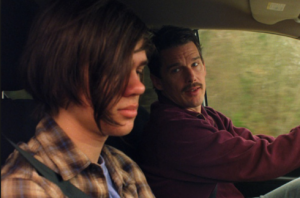 The idea for this album, which reintroduces me to songs I’ve known since I was a boy with utterly fresh ears, could have been claimed by anyone in the past four decades and recognized and acclaimed immediately as a masterstroke. As it turns out, like many things in “Boyhood,” it comes from real life: “The Black List,” as the album is known in the film, was created by actor Ethan Hawke for his own daughter. In “Boyhood,” Hawke plays Mason Sr., father to the protagonist, Mason Jr., and the scene in which this remarkable gift is presented is but one of many transcendentally truthful moments Linklater and company have created — not to mention a startling instance of Beatlemania at its most sublime.
The idea for this album, which reintroduces me to songs I’ve known since I was a boy with utterly fresh ears, could have been claimed by anyone in the past four decades and recognized and acclaimed immediately as a masterstroke. As it turns out, like many things in “Boyhood,” it comes from real life: “The Black List,” as the album is known in the film, was created by actor Ethan Hawke for his own daughter. In “Boyhood,” Hawke plays Mason Sr., father to the protagonist, Mason Jr., and the scene in which this remarkable gift is presented is but one of many transcendentally truthful moments Linklater and company have created — not to mention a startling instance of Beatlemania at its most sublime.
Hawke has shared the story of his inspiration for “The Black Album” on Buzzfeed in a post that includes the liner notes he wrote as part of his gift to his daughter and, of course, the complete tracklist.
Here’s my version:
DISC 1
My Sweet Lord (gh)
Oh, Yoko! (jl)
Helen Wheels (pm)
Whatever Gets You Through the Night (jl)
Jet (pm)
What Is Life? (gh)
Junior’s Farm (pm)
You’re Sixteen (rs)
Stand by Me (jl)
Wah-wah (gh)
Snookeroo (rs)
Uncle Albert/Admiral Halsey (pm)
Apple Scruffs (gh)
Watching the Wheels (jl)
Live and Let Die (pm)
Bangla Desh (gh)
Band on the Run (pm)
Crippled Inside (jl)
Isn’t It a Pity? (gh)
DISC 2
Imagine (jl)
Give Me Love (gh)
My Love (pm)
Mother (jl)
Mull of Kintyre (pm)
Hold On (jl)
Back Off Boogaloo (rs)
Let ‘Em In (pm)
(Just Like) Starting Over (jl)
No-No Song (rs)
If Not For You (gh)
Maybe I’m Amazed (pm)
It Don’t Come Easy (rs)
God (jl)
Beware of Darkness (gh)
Give Peace a Chance (jl)
Photograph (rs)
Free as a Bird
Real Love
My latest.
Available in print and/or in digital formats at Amazon, Barnes & Noble, Powell’s, and other purveyors of words-on-paper.
© 2024 Shawn Levy Dot Com
Theme by Anders Noren — Up ↑